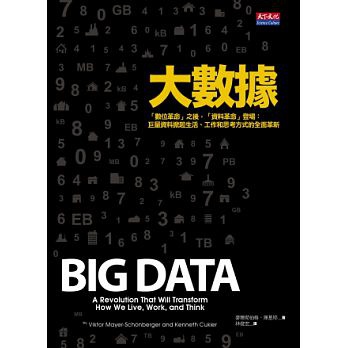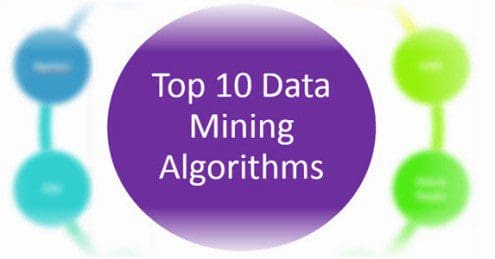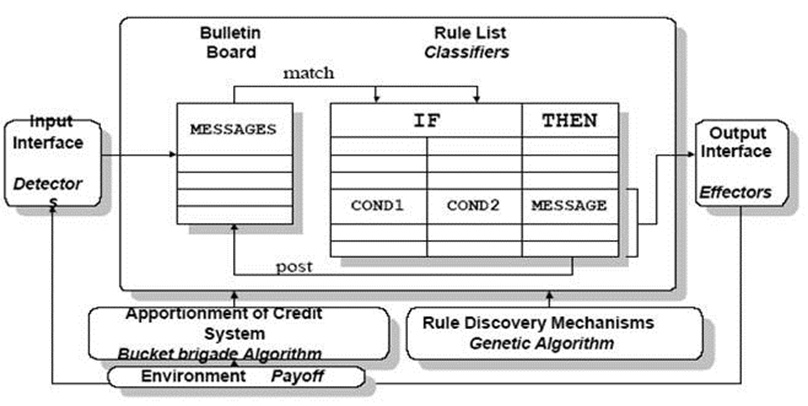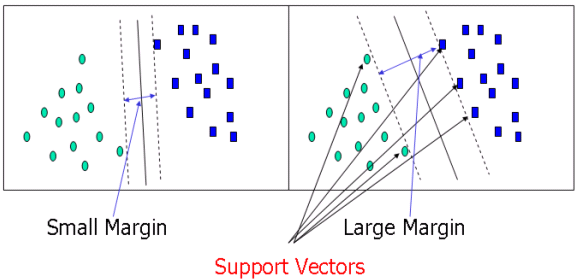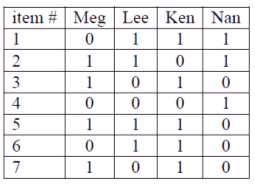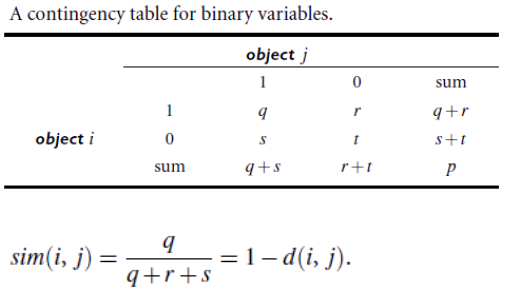C4.5,可以拿來做什麼呢?
C4.5是以決策樹形式呈現的的分類演算法。
等一等,什麼是分類(Classifier)呢?
分類(Classifier)是data mining的一種分析工具,它可以將一群資料進行分類,並進而預測新資料是落於那一個分類群。
有什麼範例嗎?
當然,假設有一群病人的資料,其中我們已得知每位病人的屬性(attributes),如:年齡,血壓,脈博,及家族史等。好了,有了這些病人的屬性後,我們想要預測那些病人會得癌症。這群病人可以分為2類:1)會得癌症 2)不會得癌症。 而我們將這些已知的病人屬性及其分類資料當成C4.5的輸入資料,而C4.5會根據新病人的屬性來預測新病人類別:1)會得癌症 2)不會得癌症。
概然C4.5的輸入資料類別是已知的,所以C4.5當然就是Supervised learning。
所以C4.5跟一般的決策樹有什麼不同呢?
- C4.5是用Information gian
You might be wondering how C4.5 is different than other decision tree systems?
- First, C4.5 uses information gain when generating the decision tree.
- Second, although other systems also incorporate pruning, C4.5 uses a single-pass pruning process to mitigate over-fitting. Pruning results in many improvements.
- Third, C4.5 can work with both continuous and discrete data. My understanding is it does this by specifying ranges or thresholds for continuous data thus turning continuous data into discrete data.
- Finally, incomplete data is dealt with in its own ways.
Why use C4.5? Arguably, the best selling point of decision trees is their ease of interpretation and explanation. They are also quite fast, quite popular and the output is human readable.
Where is it used? A popular open-source Java implementation can be found over at OpenTox. Orange, an open-source data visualization and analysis tool for data mining, implements C4.5 in their decision tree classifier.
Classifiers are great, but make sure to checkout the next algorithm about clustering…
1 C4.5 and beyond
1.1 Introduction Systems that construct classifiers are one of the commonly used tools in data mining. Such systems take as input a collection of cases, each belonging to one of a small number of classes and described by its values for a fixed set of attributes, and output a classifier that can accurately predict the class to which a new case belongs. These notes describe C4.5 [64], a descendant of CLS [41] and ID3 [62]. Like CLS and ID3, C4.5 generates classifiers expressed as decision trees, but it can also construct classifiers in more comprehensible ruleset form. We will outline the algorithms employed in C4.5, highlight some changes in its successor See5/C5.0, and conclude with a couple of open research issues.
1.2 Decision trees Given a set S of cases, C4.5 first grows an initial tree using the divide-and-conquer algorithm as follows: • If all the cases in S belong to the same class or S is small, the tree is a leaf labeled with the most frequent class in S. • Otherwise, choose a test based on a single attribute with two or more outcomes. Make this test the root of the tree with one branch for each outcome of the test, partition S into corresponding subsets S1, S2,... according to the outcome for each case, and apply the same procedure recursively to each subset.
There are usually many tests that could be chosen in this last step. C4.5 uses two heuristic criteria to rank possible tests: information gain, which minimizes the total entropy of the subsets {Si } (but is heavily biased towards tests with numerous outcomes), and the default gain ratio that divides information gain by the information provided by the test outcomes. Attributes can be either numeric or nominal and this determines the format of the test outcomes. For a numeric attribute A they are {A ≤ h, A > h} where the threshold h is found by sorting S on the values of A and choosing the split between successive values that maximizes the criterion above. An attribute A with discrete values has by default one outcome for each value, but an option allows the values to be grouped into two or more subsets with one outcome for each subset. The initial tree is then pruned to avoid overfitting. The pruning algorithm is based on a pessimistic estimate of the error rate associated with a set of N cases, E of which do not belong to the most frequent class. Instead of E/N, C4.5 determines the upper limit of the binomial probability when E events have been observed in N trials, using a user-specified confidence whose default value is 0.25. Pruning is carried out from the leaves to the root. The estimated error at a leaf with N cases and E errors is N times the pessimistic error rate as above. For a subtree, C4.5 adds the estimated errors of the branches and compares this to the estimated error if the subtree is replaced by a leaf; if the latter is no higher than the former, the subtree is pruned. Similarly, C4.5 checks the estimated error if the subtree is replaced by one of its branches and when this appears beneficial the tree is modified accordingly. The pruning process is completed in one pass through the tree. C4.5’s tree-construction algorithm differs in several respects from CART [9], for instance: • Tests in CART are always binary, but C4.5 allows two or more outcomes. • CART uses the Gini diversity index to rank tests, whereas C4.5 uses information-based criteria. • CART prunes trees using a cost-complexity model whose parameters are estimated by cross-validation; C4.5 uses a single-pass algorithm derived from binomial confidence limits. • This brief discussion has not mentioned what happens when some of a case’s values are unknown. CART looks for surrogate tests that approximate the outcomes when the tested attribute has an unknown value, but C4.5 apportions the case probabilistically among the outcomes. 1.3 Ruleset classifiers Complex decision trees can be difficult to understand, for instance because information about one class is usually distributed throughout the tree. C4.5 introduced an alternative formalism consisting of a list of rules of the form “if A and B and C and ... then class X”, where rules for each class are grouped together. A case is classified by finding the first rule whose conditions are satisfied by the case; if no rule is satisfied, the case is assigned to a default class. C4.5 rulesets are formed from the initial (unpruned) decision tree. Each path from the root of the tree to a leaf becomes a prototype rule whose conditions are the outcomes along the path and whose class is the label of the leaf. This rule is then simplified by determining the effect of discarding each condition in turn. Dropping a condition may increase the number N of cases covered by the rule, and also the number E of cases that do not belong to the class nominated by the rule, and may lower the pessimistic error rate determined as above. A hill-climbing algorithm is used to drop conditions until the lowest pessimistic error rate is found.
To complete the process, a subset of simplified rules is selected for each class in turn. These class subsets are ordered to minimize the error on the training cases and a default class is chosen. The final ruleset usually has far fewer rules than the number of leaves on the pruned decision tree. The principal disadvantage of C4.5’s rulesets is the amount of CPU time and memory that they require. In one experiment, samples ranging from 10,000 to 100,000 cases were drawn from a large dataset. For decision trees, moving from 10 to 100K cases increased CPU time on a PC from 1.4 to 61 s, a factor of 44. The time required for rulesets, however, increased from 32 to 9,715 s, a factor of 300. 1.4 See5/C5.0 C4.5 was superseded in 1997 by a commercial system See5/C5.0 (or C5.0 for short). The changes encompass new capabilities as well as much-improved efficiency, and include: • A variant of boosting [24], which constructs an ensemble of classifiers that are then voted to give a final classification. Boosting often leads to a dramatic improvement in predictive accuracy. • New data types (e.g., dates), “not applicable” values, variable misclassification costs, and mechanisms to pre-filter attributes. • Unordered rulesets—when a case is classified, all applicable rules are found and voted. This improves both the interpretability of rulesets and their predictive accuracy. • Greatly improved scalability of both decision trees and (particularly) rulesets. Scalability is enhanced by multi-threading; C5.0 can take advantage of computers with multiple CPUs and/or cores. More details are available from http://rulequest.com/see5-comparison.html. 1.5 Research issues We have frequently heard colleagues express the view that decision trees are a “solved problem.” We do not agree with this proposition and will close with a couple of open research problems. Stable trees. It is well known that the error rate of a tree on the cases from which it was constructed (the resubstitution error rate) is much lower than the error rate on unseen cases (the predictive error rate). For example, on a well-known letter recognition dataset with 20,000 cases, the resubstitution error rate for C4.5 is 4%, but the error rate from a leave-one-out (20,000-fold) cross-validation is 11.7%. As this demonstrates, leaving out a single case from 20,000 often affects the tree that is constructed! Suppose now that we could develop a non-trivial tree-construction algorithm that was hardly ever affected by omitting a single case. For such stable trees, the resubstitution error rate should approximate the leave-one-out cross-validated error rate, suggesting that the tree is of the “right” size. Decomposing complex trees. Ensemble classifiers, whether generated by boosting, bagging, weight randomization, or other techniques, usually offer improved predictive accuracy. Now, given a small number of decision trees, it is possible to generate a single (very complex) tree that is exactly equivalent to voting the original trees, but can we go the other way? That is, can a complex tree be broken down to a small collection of simple trees that, when voted together, give the same result as the complex tree? Such decomposition would be of great help in producing comprehensible decision trees.
C4.5 Acknowledgments Research on C4.5 was funded for many years by the Australian Research Council. C4.5 is freely available for research and teaching, and source can be downloaded from http://rulequest.com/Personal/c4.5r8.tar.gz.


